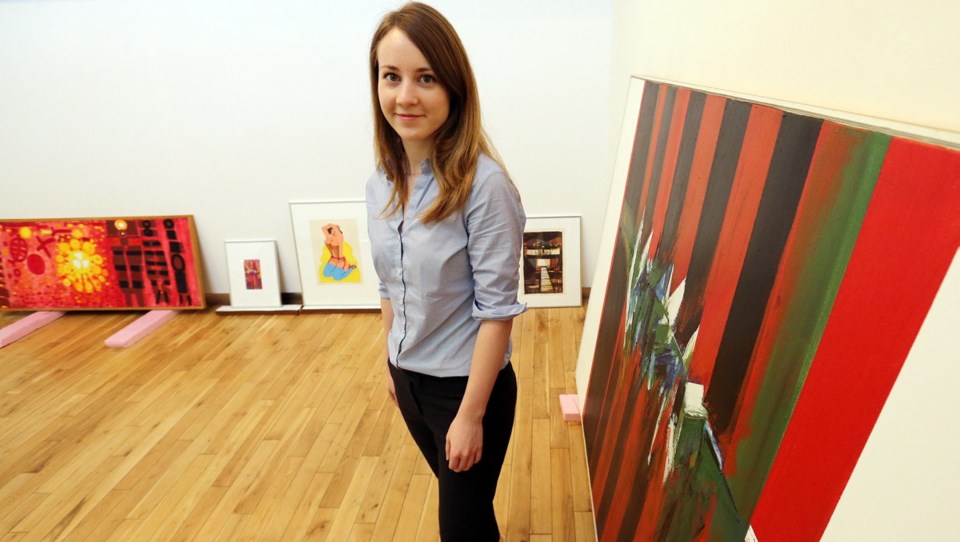What: Making a Scene — Victoria’s Artists in the 1960s
Where: Legacy Art Gallery, 630 Yates St.
When: Opens today, continues to June 27
Victoria was a sleepy seaside town in the 1960s. Yet our visual-arts scene, caught up in the spirit of a boundary-pushing decade, showed signs of big-city excitement.
This joie de vivre is reflected in a new exhibition at the downtown Legacy Art Gallery called Making a Scene: Victoria’s Artists in the 1960s. Back then, local artists such as Donald Harvey, Maxwell Bates, Herbert Siebner and Pat Martin Bates created imaginative work reflecting international trends.
It was an eye-opener for Victorians used to polite representational paintings on their walls. Making a Scene: Victoria’s Artists in the 1960s includes such works as Harvey’s Ripple, a 1965 abstract painting dominated by bold reds and bar-like vertical lines. Another highlight is the 1972 oil painting Yellow Reception. This slyly satirical look at middle-class society (a sour-faced hostess appears to be levitating) was created by Maxwell Bates, previously banned from the Calgary Art Club for being too “modern.”
About 20 artists — including Eric Metcalfe, Myfanwy Pavelic, Margaret Peterson, Carole Sabiston, Robin Skelton and Ina D.D. Uhthoff — are represented in the exhibit. The art is from the University of Victoria’s 19,000-item collection.
“This is contemporary art that was more modern, less conservative and traditional in style,” said Emerald Johnstone-Bedell, the exhibition’s curator.
She says events such as Expo 67 and British Columbia’s centennial celebrations — as well as the 1957 formation of the Canada Council for the Arts — helped foster a creative artistic environment in 1960s Victoria.
Indigenous artists such as Tony Hunt Sr. and Henry Hunt are also represented in the exhibition. Johnstone-Bedell notes the decade saw a growing interest in aboriginal arts, thanks in part to the Royal B.C. Museum’s Thunderbird Park totem-pole restoration program, which allowed the public to view the carving process.
Victoria’s arts scene was also enlivened by new commercial art galleries such as Tony Hunt’s Arts of the Raven Gallery, Bente Rehm’s Pandora’s Box and Nita Forrest’s Print Gallery.
Contemporary art was still something of a novelty in ’60s-era Victoria. The Art Gallery of Greater Victoria, which hosted modern art shows, had been established only a decade earlier. Caroline Riedel, UVic’s curator of collections, says the climate for visual arts in Victoria was set by the Victoria Sketch Club, which favoured conservative representational art — typically in the landscape tradition of British watercolourists.
Half a century ago, many Victorians greeted modern art with “a lot of kicking and screaming,” said Riedel, adding: “I don’t think it was particularly well-received early on.”
The boundary-busting spirit of Making a Scene: Victoria’s Artists in the 1960s is reflected in an experimental film being screened at the exhibit. Titled Don’t, the 1965 movie by Karl Spreitz features sculptor Bob de Castro repeatedly wagging his finger at various hijinx.
It’s a satire of social etiquette, said Riedel.
“It basically pokes fun at conventions and expectations of how you’re supposed to behave.”



